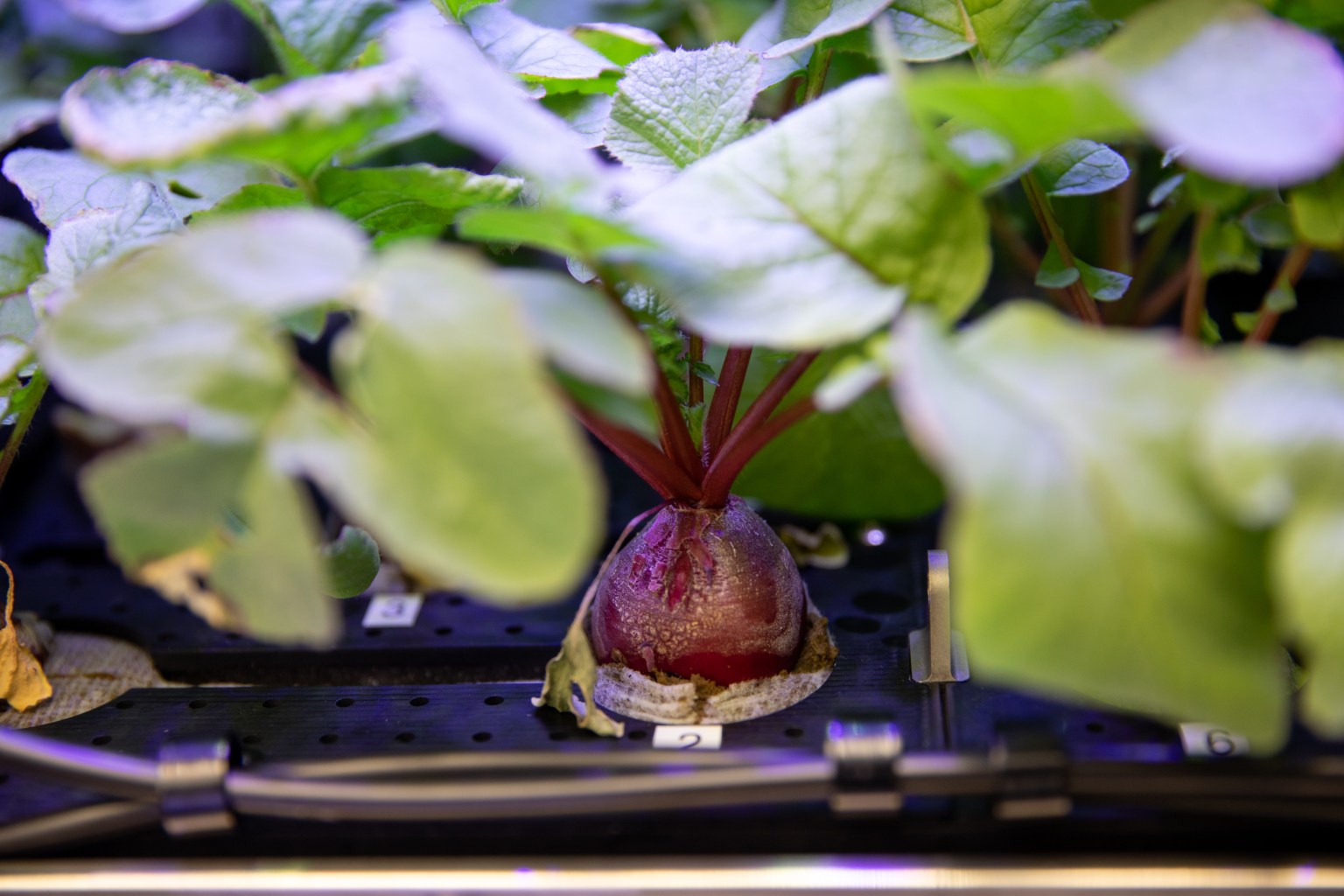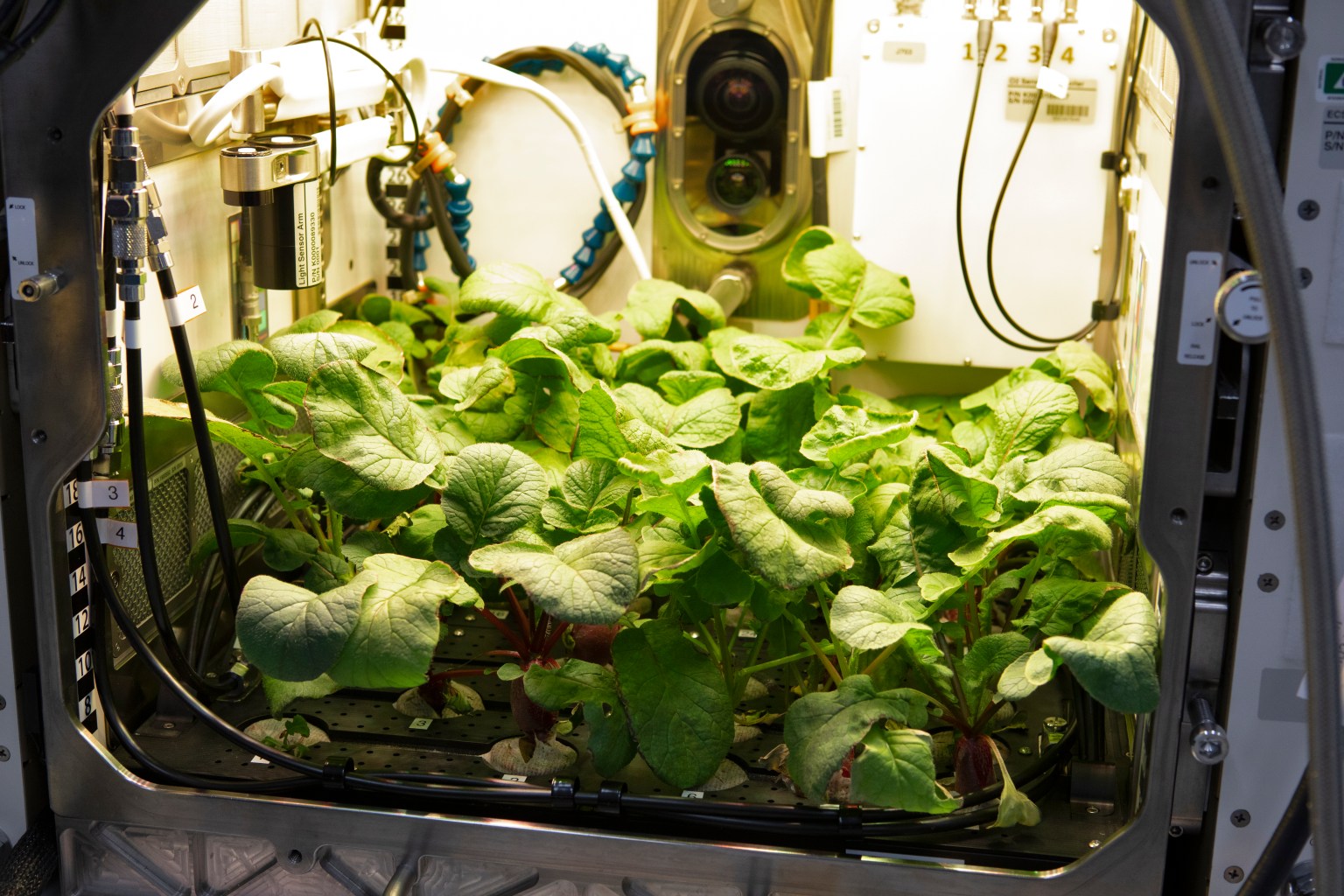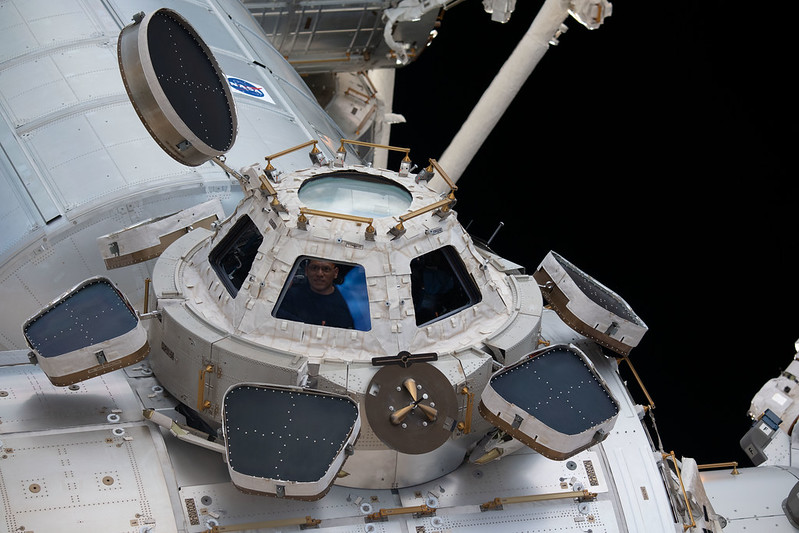
Lee esta historia en español aquí.
Crew members aboard the International Space Station conducted scientific investigations during the week of Jan. 9 that included growing high-quality protein crystals, demonstrating the production of potable water from urine, and analyzing the benefits of growing tomatoes in space.
Here are details on some of the microgravity investigations currently taking place aboard the orbiting lab:
Crystal clear structures
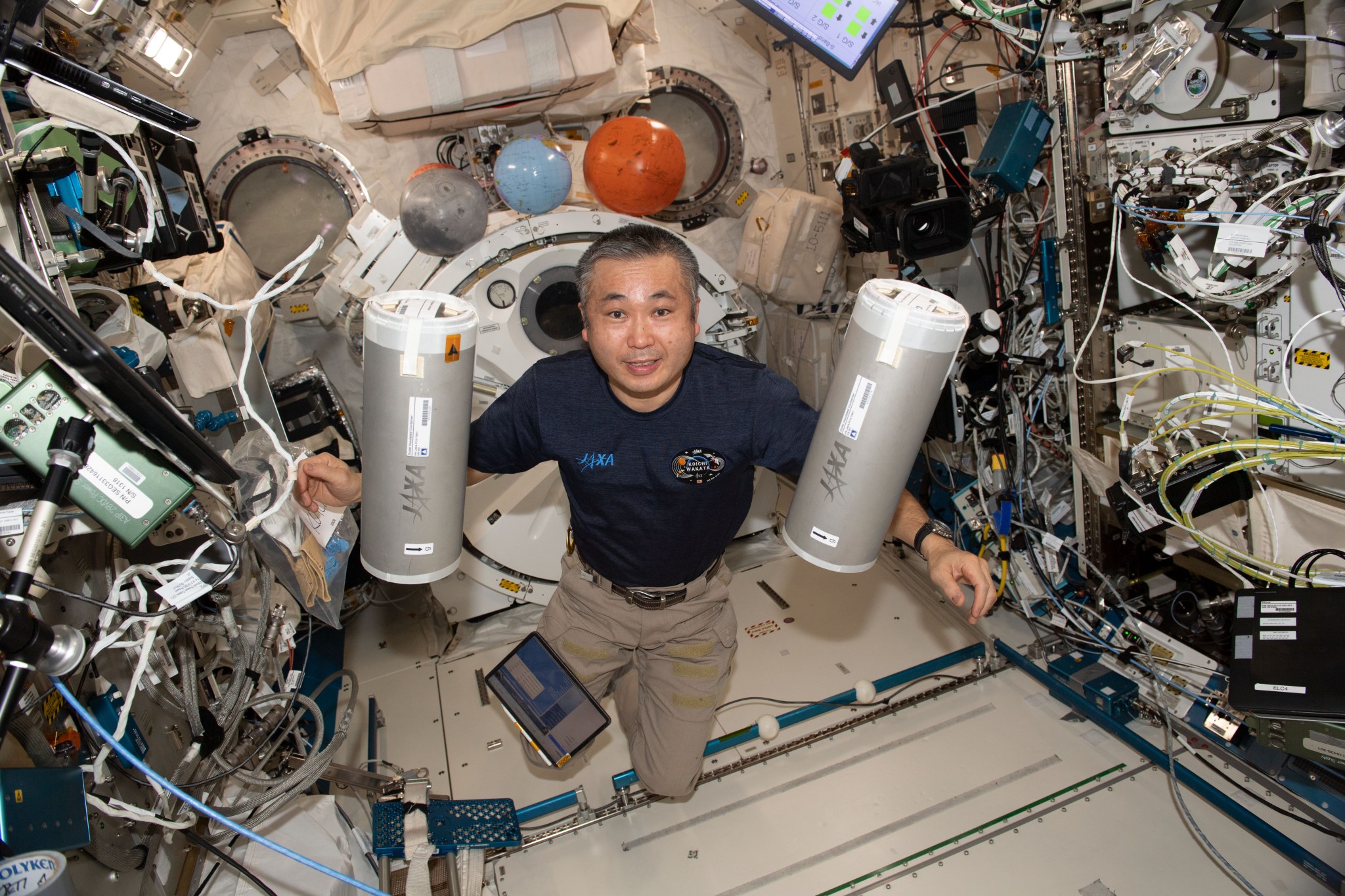
Crew members prepared samples from the Moderate Temperature PCG investigation during the week to return for analysis on the ground. This investigation from the Japan Aerospace Exploration Agency (JAXA) grows protein crystals in microgravity to help scientists determine precise protein structures, which are used to develop pharmaceuticals and to explore specific functions in the body. Microgravity enables growth of higher quality crystals than is possible on the ground, and the space station serves as an important laboratory for obtaining such crystals.
Drink up
On future long-term space missions, an adequate supply of safe drinking water could represent a significant challenge. JEM Water Recovery System, an investigation from JAXA, generates potable water from urine that previously was collected and stored or vented overboard. Demonstrating the function of this water recovery system on orbit contributes to updating the Environmental Control and Life Support System (ECLSS), which supports astronauts on the space station and future missions. The technology also could provide water regeneration in drought regions or in the wake of disasters on Earth. Crew members replaced valves on the system during the week.
Tomatoes in space
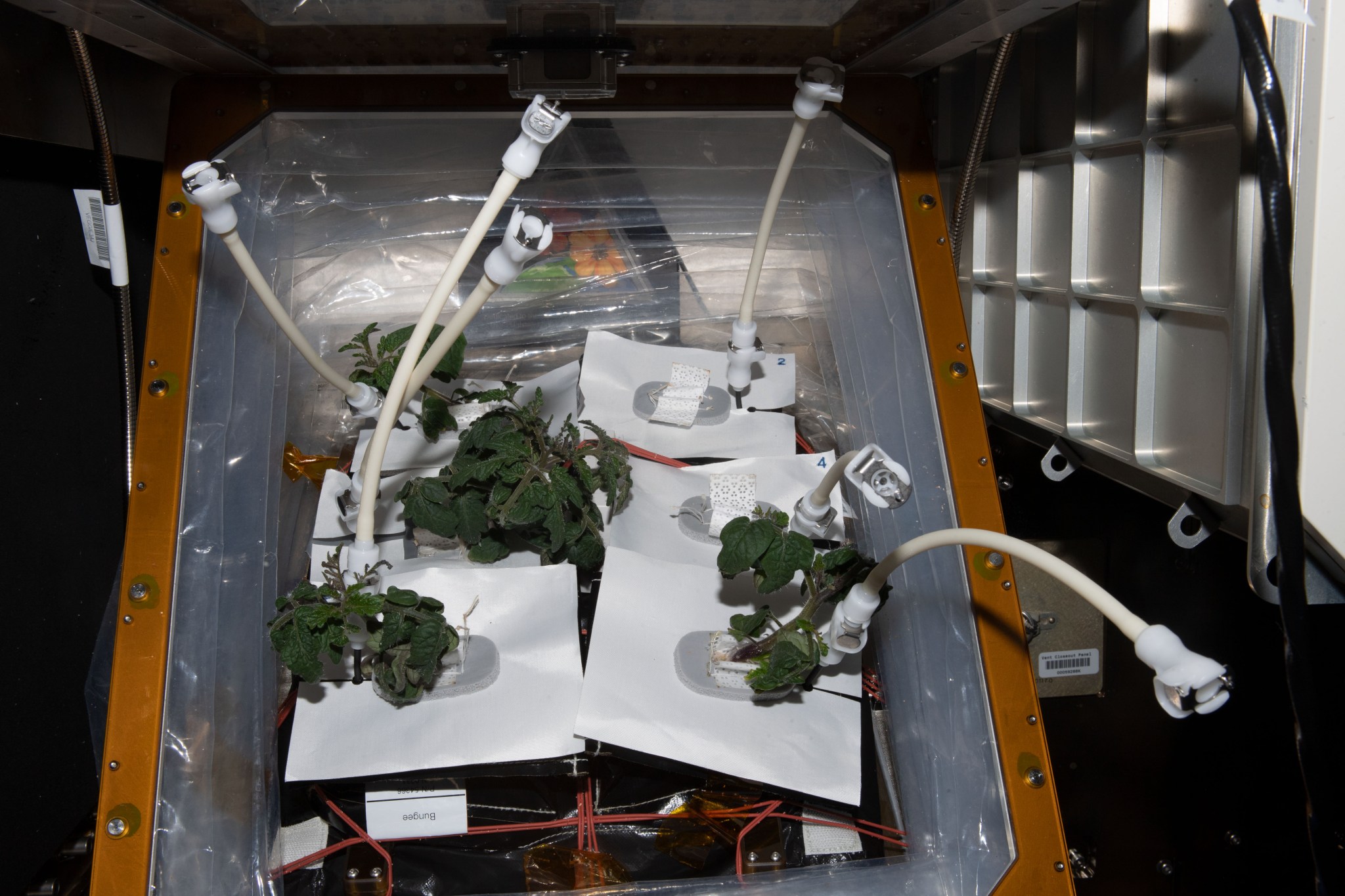
The Pick-and-Eat Salad-Crop Productivity, Nutritional Value, and Acceptability to Supplement the ISS Food System is a phased research project that examines growing plants to provide fresh food and enhance the overall living experience for crew members on future long-duration missions. It includes Veg-05, an investigation that uses the station’s Veggie facility to grow dwarf tomatoes and examine fruit production, microbial food safety, nutritional value, taste acceptability by the crew, and overall behavioral health benefits. Hardware for the investigation, essentially a miniature greenhouse, could be adapted for horticultural therapy and to provide fresh produce for those without access to a yard on Earth. During the week, crew members tended to and monitored the plants
Other investigations involving the crew:
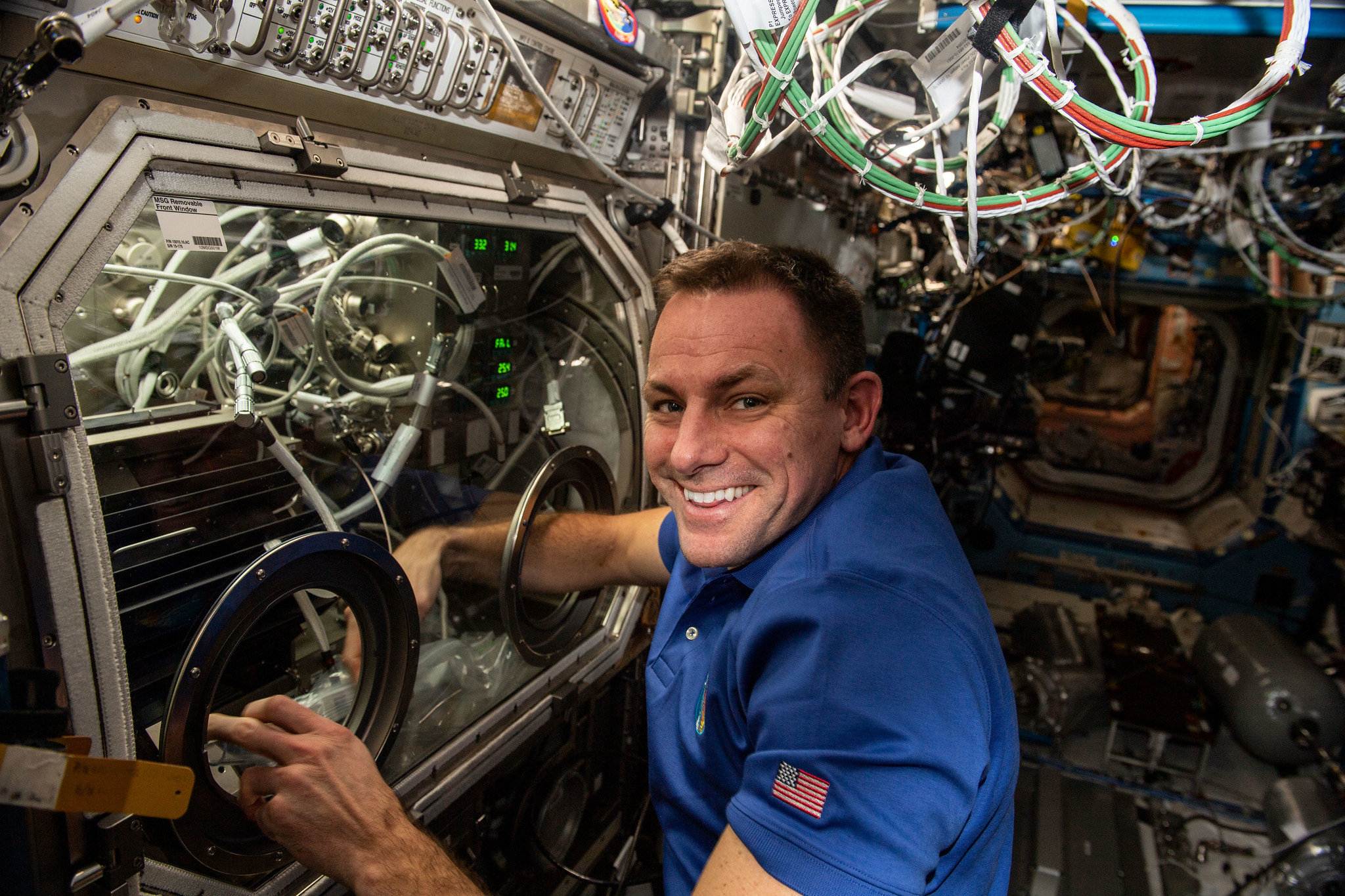
- Plant Habitat-03 assesses whether epigenetic adaptations in one generation of plants grown in space can transfer to the next generation. Results could provide insight into how to grow repeated generations of crops to provide food and other services on future space missions.
- Host Pathogen analyzes the relationship between the increased microbial virulence and reduced human immune function that can occur during spaceflight. Results could support the assessment of clinical risk to astronauts and the development of countermeasures to restore their immune function.
- ISS Medical Monitoring is an ongoing investigation that collects medical data from all crew members before, during, and after flight. By supporting overall crew health and safety, these data contribute to mission productivity and on-orbit operations.
- Confocal Microscope (also known as COSMIC) is a JAXA facility that provides fluorescence images of biological samples, providing data on the fundamental nature of cellular and tissue structure and functions in real-time.
- ISS Ham Radio provides students, teachers, parents, and others the opportunity to communicate with astronauts using amateur radio units. Before a scheduled call, students learn about the station, radio waves, and other topics, and prepare a list of questions based on the topics they have researched.
- PFMI-ASCENT, sponsored by the ISS National Lab, demonstrates a passive cooling system for electronic devices in microgravity. Such a system could reduce the use of space and electrical power needed and support future scientific investigations on the space station.
John Love, ISS Research Planning Integration Scientist
Expedition 68




























